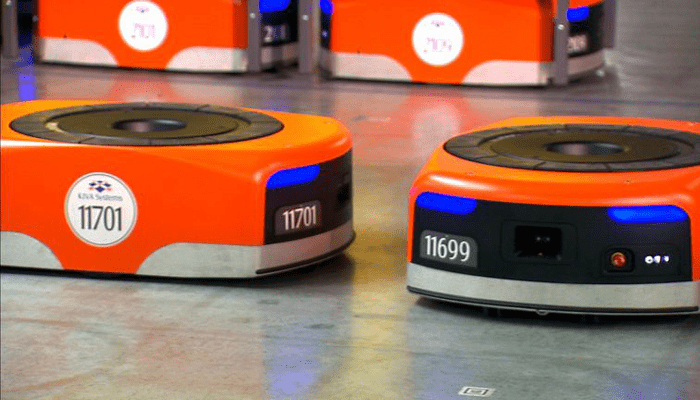Online shopping giant Amazon has done some amazing things with the help of technology and without compromising its human workforce least in its Amazon warehouses. In preparation for 2016’s holiday season, the company acquired 50 percent more Kiva Robots than in 2015, when it had 30,000 robots moving around, but also hired more human workers to handle the holiday rush in its warehouses across the continent.
Perhaps Amazon’s tendency to automate manual, time-consuming labor to complement and without completely removing the human side of the workflow is what contributes to the company’s success. Of course, we can only still say that because Amazon Go’s fully automated grocery store would impact the jobs of human cashiers and grocery staff.
Early in October 2016, CNN Reporter Matt McFarland was given a tour of Amazon’s warehouse outside Baltimore and he witnessed for himself how much quicker and more efficient the human workers are as they work alongside the Kiva robots. In fact, both the Kiva Robots and other automated machines installed in the fulfillment center allowed Amazon to not only store 50% more items in 2014 but also considerably lessen human error, which means the workers’ jobs are somewhat more secure.
In 2015, Amazon had a team of 230,000 humans working alongside the 30,000 robots in its fulfillment centers. In October 2016, Amazon opened a new robotics fulfillment center in Ontario, Canada where more than 700 new jobs were created, though it was not specified how many of the robots were stationed in that facility.
So just how does 15,000 additional robots increase human efficiency? Instead of workers manually searching for the item in its hundreds of shelves in the facility, the worker-called the picker-will just stay in his or her station while the Kiva robot quickly maneuvers to the correct aisle to carry and bring the entire shelf to the picker. The cubby hole where the item you ordered is stored will light up to indicate where the picker should get it and, once the picker retrieves it, the Kiva robot will bring the shelf back to the proper aisle as the pickers busy themselves with the next Kiva robot with another item to be retrieved.
Your order will then be placed in a recyclable yellow bin on the conveyor belt for packaging where a machine will pick out the perfect size box and cut off the perfect length of sticky tape to “hand over” to the packer who will cover the item in bubble wrap and place it inside the chosen box.
Printing and sticking shipping addresses to the packages and sorting them to the designated trucks for delivery are taken care of by the machines and conveyor belt and the next time a human handles the boxed item is when it gets loaded onto the correct mail truck.
Now imagine how many people handle hundreds and thousands of orders each day in the Amazon facility that is nearly a million square feet. The Baltimore facility alone has 3,000 full-time workers but, across all its facilities, Amazon already hired more than 76,000 new employees in 2015 and an additional 38,100 people in the first half of 2016.



